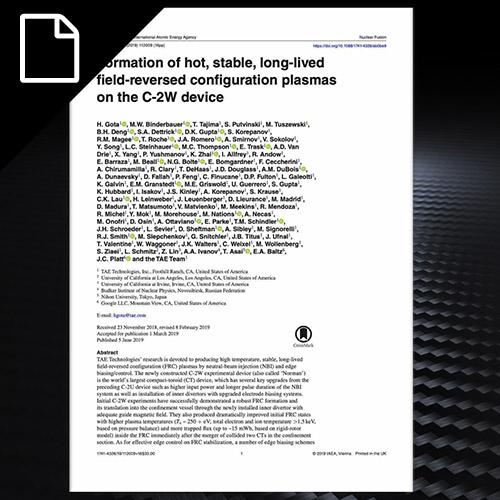
Jun 2019 | Research Library, Papers, Edge Control, Experiment, Formation, Fusion Energy, Fusion Research, Fusion Science, Fusion Technology, Overview, Performance, Plasma Research, Stability, Top Level
June 2019 | H. Gota | Nuclear Fusion | Paper
TAE Technologies’ research is devoted to producing high temperature, stable, long-lived field-reversed configuration (FRC) plasmas by neutral-beam injection (NBI) and edge biasing/control.
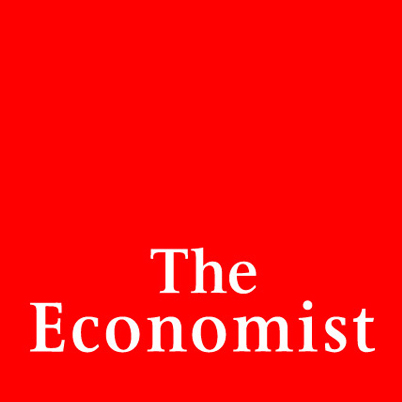
May 2019 | News
So far, Norman has produced vortices with temperatures of 3.5m°C that last around ten milliseconds, rather than the microseconds of a conventional frc. TAE hopes, by the end of this year, to have increased that temperature to around 30m°C, and tripled the plasma’s lifetime. All of which is clever. But what makes the firm’s approach special is that it plans to eschew deuterium and tritium in favour of normal hydrogen (the nucleus of which is a lone proton) and boron.
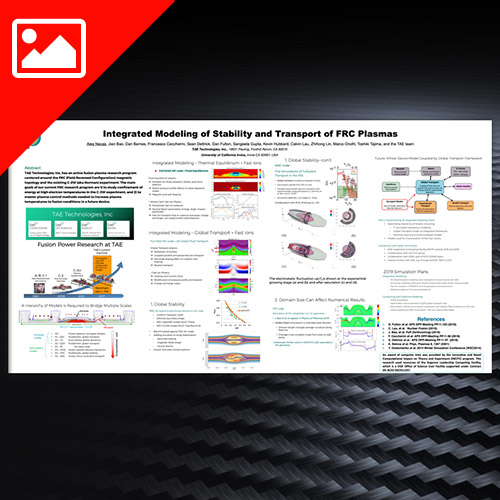
Apr 2019 | Research Library, Posters, Confinement, Equilibrium, Fast Particles, Fusion Energy, Fusion Research, Fusion Science, Fusion Technology, Instabilities, Modeling, Overview, Plasma Research, Simulation, Stability, Theory, Transport, Turbulence
April 2019 | A.Necas | 2019 Sherwood Fusion Theory | Poster
TAE Technologies, Inc, has an active fusion plasma research program centered around the FRC (Field Reversed Configuration) magnetic topology and the existing C-2W (aka Norman) experiment.
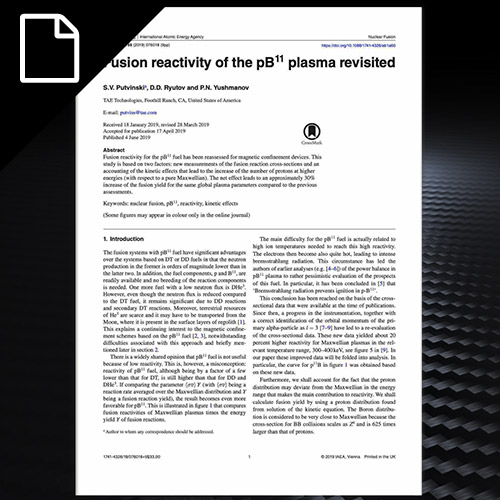
Apr 2019 | Research Library, Papers, Fusion Energy, Fusion Research, Fusion Science, Fusion Technology, Instabilities, Plasma Research, Simulation
April 2019 | J. Bao | Physics of Plasmas | Paper
Global properties of drift waves in the beam driven FRC, the C2-U device, in which the cen- tral FRC and its SOL plasma are connected with the formation sections and divertors.
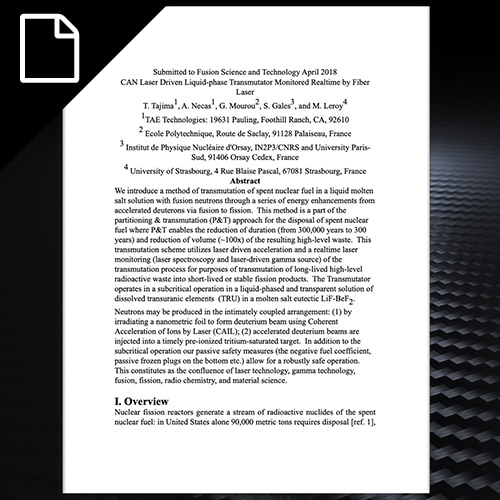
Apr 2019 | Research Library, Papers, Fueling, Fusion Energy, Fusion Research, Fusion Science, Fusion Technology, Modeling, Plasma Research, Simulation
April 12, 2019 | T. Tajima | Paper
We introduce a method of transmutation of spent radioactive nuclei in a liquid molten salt solution with fusion neutrons through a series of energy enhancements from accelerated deuterons via fusion to fission. This method is a part of the partitioning & transmutation (P&T) approach for the disposal of spent nuclear fuel where P&T enables the reduction of duration and volume of the spent nuclear fuel storage.

Apr 2019 | Research Library, Papers, Diagnostics, Experiment, Fusion Energy, Fusion Research, Fusion Science, Fusion Technology, Plasma Research
April 2019 | M. Navarro | Fusion Science and Technology | Paper
Our recent studies have shown that graphene can act as a resistant layer against plasma exposure and ion bombardment.




